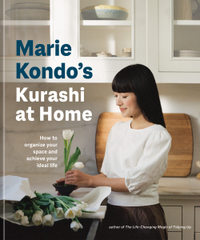The most recent addition to this portfolio, Kurashi at Home (kurashi meaning ‘way of life’ in Japanese), teaches readers to change their outlook on tidying through the KonMari Method, for which the organizer is so well known. The book is a handbook on visualizing an ‘ideal life,’ which is often the start of a clean, decluttered home, as Marie explains in the publication. It was only inevitable, therefore, that when H&G sat down with Marie Kondo, her organizational tips were at the top of our agenda. The consultant has already shared her top tidying mistakes to avoid, but what is the single biggest thing to avoid when it comes to decluttering mistakes? Here, Marie reveals all.
The biggest decluttering mistake you can make – according to Marie Kondo
Marie Kondo explains that the biggest mistake you can make is to organize a particular area rather than by category. ‘The KonMari Method firmly encourages participants to tidy by category and not by location. This means you’ll start with one type of item, such as clothes, books, papers, komono (miscellaneous items), and finally sentimental items,’ she says. ‘It might seem logical to tackle one shelf, closet, or room at a time, but tidying this way will result in constant organizing of the same areas over and over, versus a more permanent solution. When you tidy each place separately, you’re repeating the same work in many locations. Therefore, tidying by category is a vital component of the KonMari Method.’ Mastering Marie’s decluttering tips is one of the first steps to curating a ‘kurashi’ in your home. However, as Ms. Kondo shares, clutter is not the only thing threatening the ideal version of your life. ‘Every person’s definition of Kurashi is going to vary according to what they value in their life. I think this is why my method is so personal to everyone, it truly comes down to what your individual wants and needs are,’ Marie begins. ‘Sometimes, it can be tricky for people to identify what they are looking for in their home and their life. It requires having a very honest conversation with yourself to identify your hopes and dreams. I encourage participants to look in deeply when asking themselves these questions. This isn’t a conversation that needs to be quick or easy. Some people even like to write their answers down or draw examples of their ideal surroundings – do whatever is the most conducive way for you to be as true to yourself during this process, so you can truly understand your version of Kurashi.’ If you’re (inevitably) looking to learn more about the Kurashi concept, you can do so in Marie’s new book. Here, the organizational master invites you to visualize your ideal life from the moment you wake up until the end of each day. You can pre-order a copy now.
